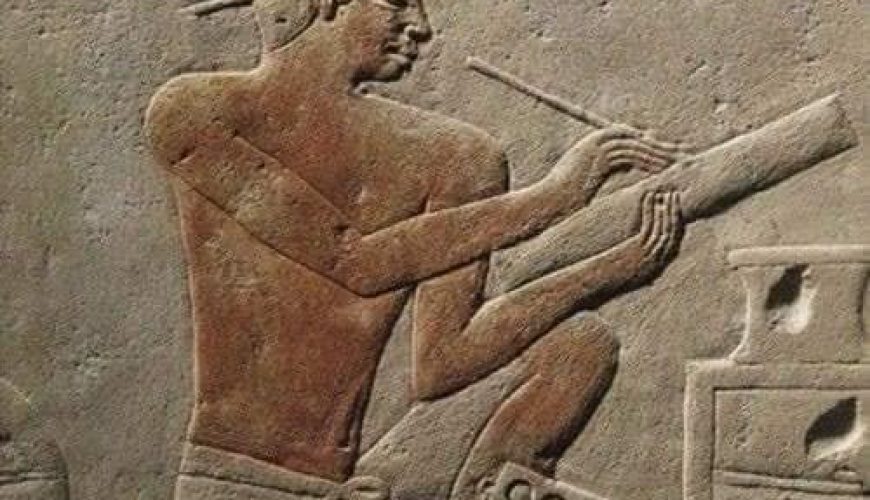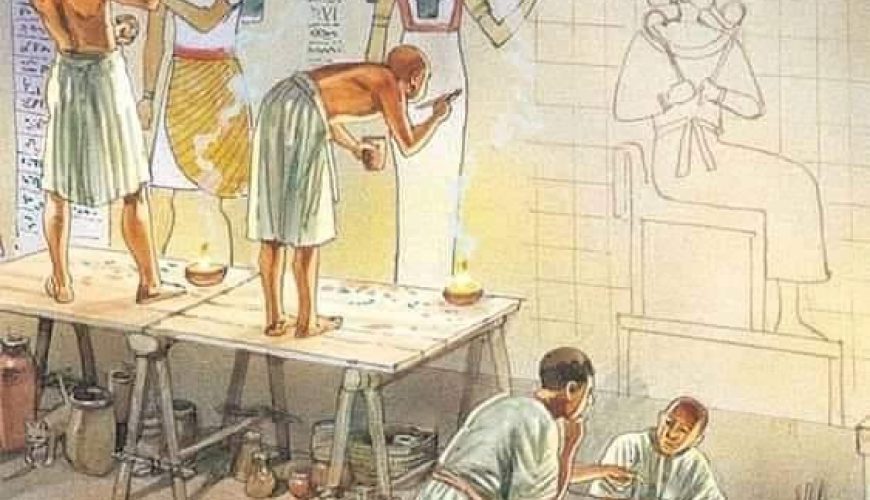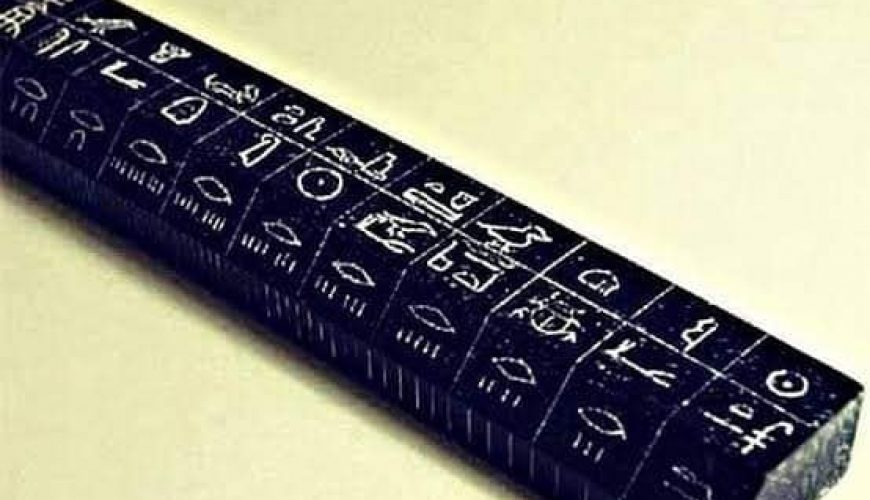Colouring and colouring materials in ancient Egypt
The colouring was a closely related craft in ancient Egypt by what was true of the colouring of all sculptures in wood and stones.
In the beginning, the painter used to draw shapes and texts on squares with soot that he lines on the stone’s surface, then the sculptor comes after him to engrave what is on the squares and then colour the sculpture until the squares disappear.
Negi, according to the dyes used in colouring, most of the Egyptian dyes were from natural mineral sources.
White was: lime carbonate and sometimes lime sulfate.
– Black: from carbon, sometimes from soot, and sometimes from coarse matter, perhaps coal
Gray: It is a mixture of black and white
Red: from the red ocher
Yellow: yellow ocher, sometimes arsenic sulfate
– Blue: is a mixture of crystalline limestone silicate (Dahnag – limestone – powder of al-Matar and Nitron stones) and sometimes cobalt compounds.
Green: Dahnah powder, which is copper ore
The medium from which the colour was installed was water with glue, egg white or gum, and it was not decided for sure which of the three was used.
• Tools used in colouring: a bundle of halfa or palm fibres tied together
Until now, the walls of temples and tombs have kept their lustre, which has not changed, despite the passage of thousands of years, which made them astonishment for everyone who watches them.




Comment (0)